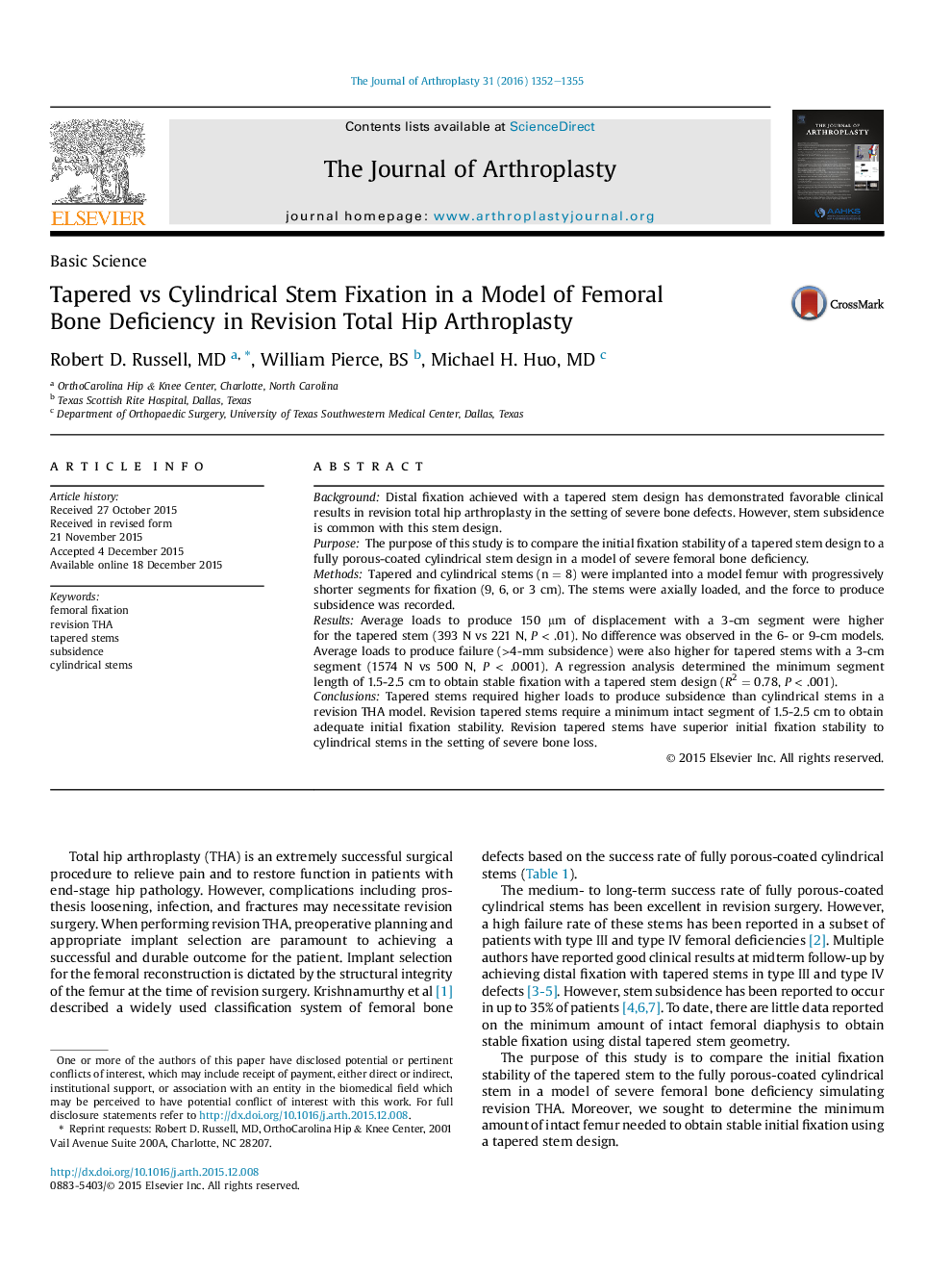| Article ID | Journal | Published Year | Pages | File Type |
|---|---|---|---|---|
| 4059900 | The Journal of Arthroplasty | 2016 | 4 Pages |
BackgroundDistal fixation achieved with a tapered stem design has demonstrated favorable clinical results in revision total hip arthroplasty in the setting of severe bone defects. However, stem subsidence is common with this stem design.PurposeThe purpose of this study is to compare the initial fixation stability of a tapered stem design to a fully porous-coated cylindrical stem design in a model of severe femoral bone deficiency.MethodsTapered and cylindrical stems (n = 8) were implanted into a model femur with progressively shorter segments for fixation (9, 6, or 3 cm). The stems were axially loaded, and the force to produce subsidence was recorded.ResultsAverage loads to produce 150 μm of displacement with a 3-cm segment were higher for the tapered stem (393 N vs 221 N, P < .01). No difference was observed in the 6- or 9-cm models. Average loads to produce failure (>4-mm subsidence) were also higher for tapered stems with a 3-cm segment (1574 N vs 500 N, P < .0001). A regression analysis determined the minimum segment length of 1.5-2.5 cm to obtain stable fixation with a tapered stem design (R2 = 0.78, P < .001).ConclusionsTapered stems required higher loads to produce subsidence than cylindrical stems in a revision THA model. Revision tapered stems require a minimum intact segment of 1.5-2.5 cm to obtain adequate initial fixation stability. Revision tapered stems have superior initial fixation stability to cylindrical stems in the setting of severe bone loss.
